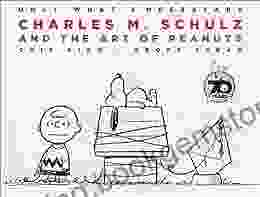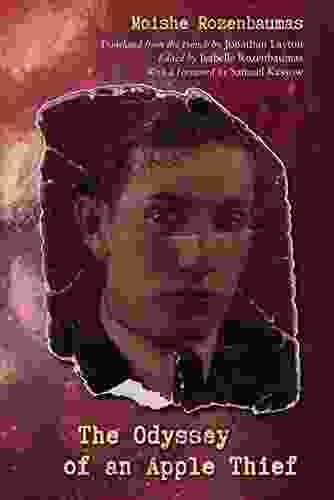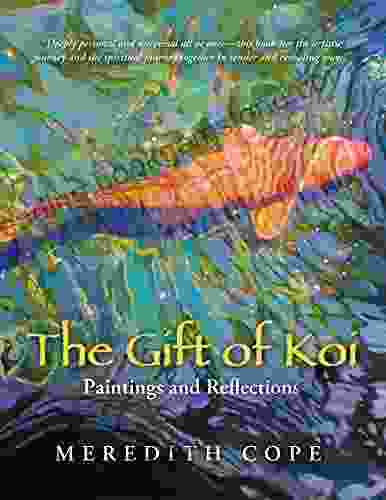The Odyssey of an Apple Thief: Judaic Traditions in Literature, Music, and Art

The tale of the apple thief is a captivating narrative that has resonated throughout Judaic traditions for centuries. From its origins in the Bible to its retellings in literature, music, and art, the story has undergone numerous transformations, each reflecting the evolving cultural and theological perspectives of its time. This article embarks on a literary and artistic odyssey, exploring the diverse ways in which the apple thief motif has been interpreted and expressed across multiple artistic mediums.
Apples in Judaic Traditions
In the Hebrew Bible, apples hold symbolic and practical significance. The Tree of Knowledge, whose fruit Adam and Eve consumed, is traditionally identified as an apple tree. This biblical narrative establishes the apple as a symbol of disobedience, temptation, and the consequences of transgression. However, apples also represent fertility, health, and abundance in Jewish tradition. The Song of Songs, a collection of love poems, extols the woman's love with imagery of apples: "Your cheeks are like halves of a pomegranate behind your veil; your hair is like a flock of goats, streaming down from Mount Gilead" (Song of Songs 6:7).
5 out of 5
| Language | : | English |
| File size | : | 38416 KB |
| Text-to-Speech | : | Enabled |
| Screen Reader | : | Supported |
| Enhanced typesetting | : | Enabled |
| Word Wise | : | Enabled |
| Print length | : | 246 pages |
The Apple Thief in the Hebrew Bible
The story of the apple thief appears in the Book of Exodus (20:15). The commandment "Thou shalt not steal" is derived from this episode, in which a thief steals an apple from an orchard. The transgression is met with harsh punishment, and the thief is condemned to death by stoning. This biblical narrative serves as a moral lesson, emphasizing the gravity of theft and the importance of respecting property rights.
Literary Adaptations
The biblical story of the apple thief has been reinterpreted in various literary works. In the medieval Jewish text "Pirke Rabbi Eliezer," the thief is identified as a Roman soldier named Titus, who stole apples from the orchard of an elderly Jewish woman. This adaptation adds a layer of historical and political significance, as it connects the biblical narrative to the Roman destruction of the Second Temple.
Another literary adaptation is the Yiddish folktale "The Apple Thief and the Rabbi." In this story, a poor man steals apples from a rabbi's orchard. The rabbi confronts the thief, but instead of punishing him, he offers him food and shelter. Through this act of kindness, the rabbi transforms the thief into a righteous man. This tale highlights the importance of compassion and the transformative power of forgiveness.
Musical Interpretations
The apple thief motif has also found expression in musical works. In the 17th century, the Jewish composer Salomone Rossi composed a madrigal titled "O bella, ma vestita." The lyrics of this madrigal draw inspiration from the Song of Songs, comparing the beloved's cheeks to apples. Rossi's musical setting reflects the sensual and celebratory aspects of the biblical imagery.
In the 20th century, the American composer Leonard Bernstein incorporated the apple thief motif into his musical "Trouble in Tahiti." The opera tells the story of a suburban couple struggling with marital problems. In one scene, the husband, Sam, sings a song titled "What a Movie!" The lyrics of this song reference the biblical story of the apple thief, as Sam laments his own failure to live up to his moral obligations. Bernstein's music captures the emotional turmoil of the characters and the underlying themes of temptation and transgression.
Artistic Depictions
The apple thief motif has also been depicted in numerous works of art. In the early 16th century, the Italian painter Titian created a painting titled "The Theft of Apples." This work depicts a group of young men and women in an orchard, with one of the men reaching out to steal an apple from a tree. The painting's idyllic setting and sensual figures convey the allure and danger of temptation.
Another notable artistic depiction is a 19th-century painting by the Russian-Jewish artist Issachar Ber Ryback titled "The Apple Thief." This painting shows a young boy stealing apples from a tree in a garden. Ryback's painting captures the innocence and curiosity of childhood, as well as the potential consequences of transgression.
Symbolic Interpretations
Throughout its various iterations, the apple thief motif has acquired multiple symbolic interpretations. In some interpretations, the apple represents knowledge, wisdom, and spiritual enlightenment. The thief's act of stealing the apple symbolizes the pursuit of knowledge, even if it involves transgressing boundaries or moral codes.
In other interpretations, the apple thief represents the human propensity for sin and transgression. The act of stealing the apple becomes a metaphor for the human condition, marked by weaknesses, temptations, and the consequences of our actions.
The odyssey of the apple thief is a captivating narrative that has permeated Judaic traditions for centuries. Through its multiple literary, musical, and artistic interpretations, the story has served as a moral lesson, a source of inspiration, and a symbol of the complexities of human nature. From the biblical text to contemporary works of art, the apple thief motif continues to resonate with audiences, offering insights into the human condition and the enduring themes of temptation, disobedience, and the transformative power of redemption.
5 out of 5
| Language | : | English |
| File size | : | 38416 KB |
| Text-to-Speech | : | Enabled |
| Screen Reader | : | Supported |
| Enhanced typesetting | : | Enabled |
| Word Wise | : | Enabled |
| Print length | : | 246 pages |
Do you want to contribute by writing guest posts on this blog?
Please contact us and send us a resume of previous articles that you have written.
 Best Book
Best Book Page Flip
Page Flip Bookshelf
Bookshelf Literary loom
Literary loom Chapter
Chapter Bookish
Bookish PageTurner
PageTurner Bibliophile
Bibliophile Story
Story Inkwell
Inkwell Bookworm
Bookworm Labyrinth
Labyrinth Plot Twist
Plot Twist Prose
Prose Paperback
Paperback Storyteller
Storyteller Sanctuary
Sanctuary Fiction
Fiction Reading
Reading Chronicle
Chronicle Read
Read Alain Kerzoncuf
Alain Kerzoncuf Sara Barnes
Sara Barnes David Morrell
David Morrell Heidi Moksnes
Heidi Moksnes Tom Dunkel
Tom Dunkel Alberlin Torres
Alberlin Torres Betty Reid Soskin
Betty Reid Soskin Peter Samuel
Peter Samuel Ann Maclean
Ann Maclean Geronimo
Geronimo A J Liebling
A J Liebling Luke F D Marsden
Luke F D Marsden Tracy Michaud
Tracy Michaud Siddharth Anbalagan
Siddharth Anbalagan Alan Carr
Alan Carr Adrien Gombeaud
Adrien Gombeaud Maturin Murray Ballou
Maturin Murray Ballou Aki Choklat
Aki Choklat K J Gillenwater
K J Gillenwater Ntozake Shange
Ntozake Shange Alan Bachmann
Alan Bachmann Margaret Mitchell
Margaret Mitchell Cheech Marin
Cheech Marin Matthew Reilly
Matthew Reilly Michael J Fox
Michael J Fox George Bernard Shaw
George Bernard Shaw Kelly Bowen
Kelly Bowen Giannalberto Bendazzi
Giannalberto Bendazzi Gerhard Haase Hindenberg
Gerhard Haase Hindenberg Evanna Lynch
Evanna Lynch Alex Moore
Alex Moore Eileen Sorg
Eileen Sorg Inman Learning
Inman Learning Anthony Doerr
Anthony Doerr Kindle Edition
Kindle Edition Adeline Lim
Adeline Lim N Dia Rae
N Dia Rae Laurel Hart
Laurel Hart Aleksandr Solzhenitsyn
Aleksandr Solzhenitsyn Jennifer Sewing
Jennifer Sewing Naughty Dog
Naughty Dog Peter Carey
Peter Carey Brad Thor
Brad Thor Allison Moore
Allison Moore Jean Pederson
Jean Pederson Haroon Moghul
Haroon Moghul Rudy Rucker
Rudy Rucker Wakefield Poole
Wakefield Poole Rich Polanco
Rich Polanco Anne Thomas Soffee
Anne Thomas Soffee Barbara Brownie
Barbara Brownie Fluent In Korean
Fluent In Korean Anne Glenconner
Anne Glenconner Aeham Ahmad
Aeham Ahmad Alex Hibbert
Alex Hibbert Anna M Church
Anna M Church Alan Sanders
Alan Sanders D Rus
D Rus Gay Talese
Gay Talese C M Muller
C M Muller Anais Granofsky
Anais Granofsky Tim Lawrence
Tim Lawrence Alejandra Viscarra
Alejandra Viscarra Harry Thurston
Harry Thurston Dave Cornthwaite
Dave Cornthwaite Antony Sher
Antony Sher Adele P Margolis
Adele P Margolis Francis M Higman
Francis M Higman William Golding
William Golding Jessica Lee
Jessica Lee Charles De Lint
Charles De Lint Katie Daisy
Katie Daisy Alan Maimon
Alan Maimon Allison Pataki
Allison Pataki Danielle Donaldson
Danielle Donaldson Brien Foerster
Brien Foerster Michael Anderson
Michael Anderson Tim Bonyhady
Tim Bonyhady Azalea Ellis
Azalea Ellis Ed Miller
Ed Miller Charles Chipiez
Charles Chipiez Alex Foster
Alex Foster Keisha Ervin
Keisha Ervin Winifred Brown
Winifred Brown Jessica Fanigliulo
Jessica Fanigliulo Michael Weeks
Michael Weeks Nancy Milford
Nancy Milford Terry Barrett
Terry Barrett Dustin Lynx
Dustin Lynx Alex Wagner
Alex Wagner Alex Tannen
Alex Tannen Samuel R Delany
Samuel R Delany Aer Ki Jyr
Aer Ki Jyr Max Eisen
Max Eisen Adrien Clautrier
Adrien Clautrier Markus S Agerer
Markus S Agerer Adrian Dater
Adrian Dater Alberto Manguel
Alberto Manguel Jason Cordova
Jason Cordova Frances Kai Hwa Wang
Frances Kai Hwa Wang Stephen Davis
Stephen Davis Giovanni Iannoni
Giovanni Iannoni Robert Arp
Robert Arp Magunta Dayakar
Magunta Dayakar Alex Tizon
Alex Tizon Alicia Drake
Alicia Drake Anita Friedman
Anita Friedman Nancy Beiman
Nancy Beiman Elizabeth Mcpherson
Elizabeth Mcpherson Adele Wagstaff
Adele Wagstaff Alda Sigmundsdottir
Alda Sigmundsdottir Paul Clark
Paul Clark Judy A Bernstein
Judy A Bernstein Tyler Green
Tyler Green Mary Monroe
Mary Monroe Nicolas Sellens
Nicolas Sellens John Perrier
John Perrier Bobby Love
Bobby Love Andy Steves
Andy Steves Jeffrey Spivak
Jeffrey Spivak Jennie Allen
Jennie Allen Stuart Taylor
Stuart Taylor Heather Hutchison
Heather Hutchison Gareth C Meadows
Gareth C Meadows Frank Catalano
Frank Catalano Cherrie Moraga
Cherrie Moraga Jeff Lieberman
Jeff Lieberman Bart Rulon
Bart Rulon Diane Mierzwik
Diane Mierzwik Harlow Robinson
Harlow Robinson Hayley Mills
Hayley Mills Howexpert Press
Howexpert Press Candida R Moss
Candida R Moss Dominique Dupuy
Dominique Dupuy Jane Patrick
Jane Patrick Bill Manley
Bill Manley Alfons Kaiser
Alfons Kaiser Cecil Jenkins
Cecil Jenkins Aimee Nezhukumatathil
Aimee Nezhukumatathil Stuart Thornton
Stuart Thornton Marco Livingstone
Marco Livingstone Dale Olausen
Dale Olausen Abdulrazak Gurnah
Abdulrazak Gurnah Rian Hughes
Rian Hughes Christopher G Nuttall
Christopher G Nuttall Martin Edge
Martin Edge Amy Tan
Amy Tan Glyn Macey
Glyn Macey Lama Rod Owens
Lama Rod Owens John Ingledew
John Ingledew Keila Rowe
Keila Rowe V A Lewis
V A Lewis Osman Yousefzada
Osman Yousefzada Seth Kugel
Seth Kugel Alex Hillkurtz
Alex Hillkurtz Paul Hallas
Paul Hallas Alan Veale
Alan Veale Sarah Spencer
Sarah Spencer Troy Taylor
Troy Taylor Alan Grainger
Alan Grainger Gary Jennings
Gary Jennings Paula Marantz Cohen
Paula Marantz Cohen Donna Digiuseppe
Donna Digiuseppe Louise Erdrich
Louise Erdrich Brenda Barrett
Brenda Barrett Alex Kerr
Alex Kerr Soon Y Warren
Soon Y Warren Herman Melville
Herman Melville Veronica Sekules
Veronica Sekules Rachael Cerrotti
Rachael Cerrotti John Varley
John Varley Grace Lees Maffei
Grace Lees Maffei Greg Sestero
Greg Sestero Al Sharpton
Al Sharpton Alexa West
Alexa West Michael Reyes
Michael Reyes Terez Mertes Rose
Terez Mertes Rose Afia Atakora
Afia Atakora Christian Cameron
Christian Cameron Josh Golding
Josh Golding Ava Reid
Ava Reid Stefano Mancuso
Stefano Mancuso Ak Turner
Ak Turner Alan Jacobson
Alan Jacobson Peter Gray
Peter Gray Judith M Heimann
Judith M Heimann Alan Colquhoun
Alan Colquhoun Ramy Vance
Ramy Vance Michele Bousquet
Michele Bousquet Dima Ghawi
Dima Ghawi Randy Palmer
Randy Palmer Alec Potrero
Alec Potrero Akwaeke Emezi
Akwaeke Emezi Shaul Kelner
Shaul Kelner Junheng Li
Junheng Li Laurie Schneider Adams
Laurie Schneider Adams P T Books
P T Books Richard Poulin
Richard Poulin R J Patterson
R J Patterson Mary Brooks Picken
Mary Brooks Picken Fadel Abuelula
Fadel Abuelula A R Corbin
A R Corbin Alexa Martin
Alexa Martin Albert Samaha
Albert Samaha My Daily Spanish
My Daily Spanish Peter Warner
Peter Warner Aileen Bordman
Aileen Bordman Massoud Hayoun
Massoud Hayoun Alastair Vere Nicoll
Alastair Vere Nicoll Misba
Misba William C Meadows
William C Meadows Gary Zacny
Gary Zacny Franklyn Griffiths
Franklyn Griffiths Christian Stoll
Christian Stoll Alex Jennings
Alex Jennings Michael Samerdyke
Michael Samerdyke Chip Kidd
Chip Kidd Chloe Garner
Chloe Garner Alex Kava
Alex Kava Claudia Rankine
Claudia Rankine Richard F Weyand
Richard F Weyand Stephen Bodio
Stephen Bodio Nikolaus Julius Weichselbaumer
Nikolaus Julius Weichselbaumer Nicki Grace
Nicki Grace Fanny Kelly
Fanny Kelly Reshonda Tate Billingsley
Reshonda Tate Billingsley Fiona Humberstone
Fiona Humberstone Adrian Tchaikovsky
Adrian Tchaikovsky Cynthia D Yoder
Cynthia D Yoder Roxana Robinson
Roxana Robinson Nancy Marguerite Anderson
Nancy Marguerite Anderson Bernard Diederich
Bernard Diederich Harold Holzer
Harold Holzer Bob Rohm
Bob Rohm John Gold
John Gold Richard Hunt
Richard Hunt Thomas Huhti
Thomas Huhti Alejandro Jodorowsky
Alejandro Jodorowsky Emily Maker
Emily Maker Anne Macleod
Anne Macleod Torben Landskrone
Torben Landskrone Kim E Nielsen
Kim E Nielsen Richard Lloyd Parry
Richard Lloyd Parry Ella Blake
Ella Blake Smashing Magazine
Smashing Magazine Jack Jewers
Jack Jewers Paul J Pastor
Paul J Pastor D K Holmberg
D K Holmberg Robert Condon
Robert Condon Akaisha Kaderli
Akaisha Kaderli Mark Panek
Mark Panek A J Diamond
A J Diamond Alex Grey
Alex Grey Lauren D Schmalz
Lauren D Schmalz C M Carney
C M Carney Gregory Benford
Gregory Benford Tamara Thiessen
Tamara Thiessen Nikki Giovanni
Nikki Giovanni Stefan Zweig
Stefan Zweig Herman Wouk
Herman Wouk Jeffery H Haskell
Jeffery H Haskell A K Duboff
A K Duboff Christoph Brueck
Christoph Brueck Ted Okuda
Ted Okuda Justin Monroe
Justin Monroe Akiva Teddy Macleod
Akiva Teddy Macleod Scott Harwood
Scott Harwood 3rd Edition Kindle Edition
3rd Edition Kindle Edition Jesse Wente
Jesse Wente J R R Tolkien
J R R Tolkien Michael Connelly
Michael Connelly Bernard Cornwell
Bernard Cornwell Ninni Holmqvist
Ninni Holmqvist Robert Marshall
Robert Marshall Robyn Blakeman
Robyn Blakeman Alastair Campbell
Alastair Campbell Tupac Shakur
Tupac Shakur Akira Kurosawa
Akira Kurosawa Mia P Manansala
Mia P Manansala Yahtzee Croshaw
Yahtzee Croshaw Nihon Vogue
Nihon Vogue Gregory Michie
Gregory Michie Hob Osterlund
Hob Osterlund Alan Laycock
Alan Laycock Kirsten Weiss
Kirsten Weiss Pam Cook
Pam Cook G J Ogden
G J Ogden Elizabeth Holmes
Elizabeth Holmes Mary Karr
Mary Karr Bradley Wright
Bradley Wright Alejandro Zambrano Sevillano
Alejandro Zambrano Sevillano Amanda Lawrence
Amanda Lawrence Julie Collins
Julie Collins Karl Beecher
Karl Beecher Michael Sayman
Michael Sayman Rob Stone
Rob Stone A J Verdelle
A J Verdelle Kazuaki Tanahashi
Kazuaki Tanahashi Roland Nyns
Roland Nyns Rozsika Parker
Rozsika Parker Kayleigh Mcenany
Kayleigh Mcenany Robert M Kerns
Robert M Kerns Tom Scocca
Tom Scocca Ken Layne
Ken Layne John French
John French Graham Mcneill
Graham Mcneill Matt Dickinson
Matt Dickinson Katja Schmitt
Katja Schmitt A J Markam
A J Markam Arlene Croce
Arlene Croce Aisha Sabatini Sloan
Aisha Sabatini Sloan Ricardo Victoria
Ricardo Victoria Eden Dawn
Eden Dawn Chimamanda Ngozi Adichie
Chimamanda Ngozi Adichie Philip Norman
Philip Norman Greg Jenkins
Greg Jenkins Andrew Solomon
Andrew Solomon Tod Benoit
Tod Benoit Ajax Lygan
Ajax Lygan A D Davies
A D Davies Francisco Martin Rayo
Francisco Martin Rayo Lavonne Mueller
Lavonne Mueller Adrienne Keene
Adrienne Keene Al Davidson
Al Davidson Abdul El Sayed
Abdul El Sayed Belinda Smith Cicarella
Belinda Smith Cicarella Charles Mccormac
Charles Mccormac Christopher P Jones
Christopher P Jones Danie Ware
Danie Ware Colette Pitcher
Colette Pitcher Al Saadiq Banks
Al Saadiq Banks Alan Verskin
Alan Verskin Fiona Maccarthy
Fiona Maccarthy Alan Rabinowitz
Alan Rabinowitz Jeanne Filler Scott
Jeanne Filler Scott Richard Ayoade
Richard Ayoade John Gonzalez
John Gonzalez Scott Bukatman
Scott Bukatman Sabrina Devonshire
Sabrina Devonshire Shelli Marie
Shelli Marie Matt Ortile
Matt Ortile Alex Dudok De Wit
Alex Dudok De Wit John Phillip Santos
John Phillip Santos Paul Austin
Paul Austin Geninne Zlatkis
Geninne Zlatkis Gail Pool
Gail Pool Linda Bloomfield
Linda Bloomfield Peter Gethers
Peter Gethers J D Adams
J D Adams Cassia Cogger
Cassia Cogger Masahiro Kasahara
Masahiro Kasahara Paul Hadden
Paul Hadden Wes Mcdowell
Wes Mcdowell Ginger Zee
Ginger Zee Albert Blasco Peris
Albert Blasco Peris Erika Hecht
Erika Hecht Hans Keilson
Hans Keilson Josh Holliday
Josh Holliday Don Yaeger
Don Yaeger Noam Oswin
Noam Oswin Alex Robinson
Alex Robinson Garret Romaine
Garret Romaine St Paul S Greek Orthodox Church
St Paul S Greek Orthodox Church Andrew Morton
Andrew Morton Alastair Reynolds
Alastair Reynolds Anne Vipond
Anne Vipond Despina Stratigakos
Despina Stratigakos Vinny Sagoo
Vinny Sagoo Jennifer Egan
Jennifer Egan Sherry Turkle
Sherry Turkle Albert Woodfox
Albert Woodfox Alex White
Alex White Tom Swimm
Tom Swimm Jennifer Lilya
Jennifer Lilya Eric Sprinkle
Eric Sprinkle 1st Edition Kindle Edition
1st Edition Kindle Edition Geert Mak
Geert Mak Rachel Mcmillan
Rachel Mcmillan Charlene Tarbox
Charlene Tarbox Michael Booth
Michael Booth Sarah Ferguson
Sarah Ferguson Timothy Samara
Timothy Samara Emilie Conrad Da Oud
Emilie Conrad Da Oud C N Phillips
C N Phillips Alistair Urquhart
Alistair Urquhart James S A Corey
James S A Corey Robert Clark
Robert Clark Aurora Levins Morales
Aurora Levins Morales Samantha Downing
Samantha Downing James Willis
James Willis Neil Wilson
Neil Wilson Tom Weaver
Tom Weaver Jim Hinckley
Jim Hinckley Thomas Geve
Thomas Geve Georgia Purdom
Georgia Purdom Russell Staiff
Russell Staiff Simon Callow
Simon Callow Monica Russel
Monica Russel Ella Frances Sanders
Ella Frances Sanders Matthew Bourne
Matthew Bourne Albert Corbeto
Albert Corbeto L Loren
L Loren Rocio Carvajal
Rocio Carvajal Eliane Strosberg
Eliane Strosberg Alan M Davis
Alan M Davis Living Languages
Living Languages Adam Nayman
Adam Nayman Malka Older
Malka Older F Sehnaz Bac
F Sehnaz Bac Lon Varnadore
Lon Varnadore Danny Newman
Danny Newman Kathleen Brady
Kathleen Brady S Elizabeth
S Elizabeth Peter Burke
Peter Burke Beth Alison Maloney
Beth Alison Maloney Ben D Over
Ben D Over Bill Dixon
Bill Dixon Agatha Christie
Agatha Christie Aleron Kong
Aleron Kong Tara Ellis
Tara Ellis Lawrence F Lihosit
Lawrence F Lihosit Ally Morin
Ally Morin Amy Latta
Amy Latta Sarah Polley
Sarah Polley Joseph Kim
Joseph Kim Alan Murphy
Alan Murphy Lee Craker
Lee Craker Natasha Boyd
Natasha Boyd Alex Kotlowitz
Alex Kotlowitz M Osman Siddique
M Osman Siddique Amanda Gorman
Amanda Gorman Kimiko Kitani
Kimiko Kitani Alecia J
Alecia J Huma Abedin
Huma Abedin Gerald L Kooyman
Gerald L Kooyman William Gaskill
William Gaskill Lynsey Addario
Lynsey Addario John Maloof
John Maloof Yvvette Edwards
Yvvette Edwards Eric Goldberg
Eric Goldberg Roberto Lovato
Roberto Lovato Eddie R Hicks
Eddie R Hicks Edmund Morris
Edmund Morris Sandie Heron
Sandie Heron Viola Shipman
Viola Shipman Michelle Loucadoux
Michelle Loucadoux Joseph Campbell
Joseph Campbell Faith Hunter
Faith Hunter Alex Berenson
Alex Berenson George Monbiot
George Monbiot Juhea Kim
Juhea Kim Felix R Savage
Felix R Savage Jack L Grossman
Jack L Grossman Mark William Shaw
Mark William Shaw Alex Gough
Alex Gough Rosa Park
Rosa Park Mary Ann Shaffer
Mary Ann Shaffer Adam Roberts
Adam Roberts Susan Evenson
Susan Evenson George Smith
George Smith Robert Byron
Robert Byron Antonio Centeno
Antonio Centeno Alex Zadeh
Alex Zadeh Learning Through Activities
Learning Through Activities Marian Filar
Marian Filar Alex Danchev
Alex Danchev Tom Wood
Tom Wood Dave Addey
Dave Addey Roger Bennett
Roger Bennett Paul Curry
Paul Curry Rhonda K Garelick
Rhonda K Garelick A J Alonzo Wind
A J Alonzo Wind James Baldwin
James Baldwin Ann Mah
Ann Mah Aleksandar Nedeljkovic
Aleksandar Nedeljkovic Martin Mosebach
Martin Mosebach Afua Hirsch
Afua Hirsch A E Filby
A E Filby Laura Galloway
Laura Galloway Saleem H Ali
Saleem H Ali Sean Hall
Sean Hall Lee Goldberg
Lee Goldberg Marco Leonel Garcia Gonzalez
Marco Leonel Garcia Gonzalez David Conyers
David Conyers J Pal
J Pal Patrick J Flannigan
Patrick J Flannigan Kerry Trout
Kerry Trout Alan Dean Foster
Alan Dean Foster Mariusz Krukowski
Mariusz Krukowski Robin Meloy Goldsby
Robin Meloy Goldsby Sjeng Scheijen
Sjeng Scheijen Sarah Crafts
Sarah Crafts Julian Hoxter
Julian Hoxter Margaret Shepherd
Margaret Shepherd Geoff Hann
Geoff Hann Craig Johnson
Craig Johnson Laurie Birnsteel
Laurie Birnsteel Jack Anderson
Jack Anderson Alex Albrinck
Alex Albrinck Irmgard Bartenieff
Irmgard Bartenieff Guy Kawasaki
Guy Kawasaki Armond T Joyce
Armond T Joyce E C Godhand
E C Godhand Laurieann Gibson
Laurieann Gibson Ivy Mix
Ivy Mix Daniel Kay Hertz
Daniel Kay Hertz Mark Christopher Weber
Mark Christopher Weber Richard Doetsch
Richard Doetsch Alan Smith
Alan Smith Ann Torrence
Ann Torrence Akiko Busch
Akiko Busch Luciano Thomazelli
Luciano Thomazelli Aimee Alexander
Aimee Alexander Julian Bell
Julian Bell Aleksandar Hemon
Aleksandar Hemon Joan Druett
Joan Druett
Light bulbAdvertise smarter! Our strategic ad space ensures maximum exposure. Reserve your spot today!

 Jason HayesPip Flinx Adventure: Embark on an Epic Quest in the 15th Installment of the...
Jason HayesPip Flinx Adventure: Embark on an Epic Quest in the 15th Installment of the... Miguel de CervantesFollow ·2.2k
Miguel de CervantesFollow ·2.2k Vincent MitchellFollow ·9.7k
Vincent MitchellFollow ·9.7k Jay SimmonsFollow ·2.3k
Jay SimmonsFollow ·2.3k Larry ReedFollow ·4.9k
Larry ReedFollow ·4.9k Preston SimmonsFollow ·13.8k
Preston SimmonsFollow ·13.8k Roberto BolañoFollow ·5.7k
Roberto BolañoFollow ·5.7k Liam WardFollow ·7.5k
Liam WardFollow ·7.5k Herman MelvilleFollow ·9.7k
Herman MelvilleFollow ·9.7k

 Stephen King
Stephen KingJudge This: The Unforgettable Book Covers of Chip Kidd
Chip Kidd is one of the most...

 Curtis Stewart
Curtis StewartSovereignty, Security, and Stewardship: Interwoven...
The geopolitical landscape of the 21st...

 Jay Simmons
Jay SimmonsOnly What Necessary: The Ultimate Guide to Minimalist...
Unveiling the Transformative...

 Austin Ford
Austin FordMaster Your Cricut Maker: Unleashing the Power of Design...
Embracing the Cricut...
5 out of 5
| Language | : | English |
| File size | : | 38416 KB |
| Text-to-Speech | : | Enabled |
| Screen Reader | : | Supported |
| Enhanced typesetting | : | Enabled |
| Word Wise | : | Enabled |
| Print length | : | 246 pages |














